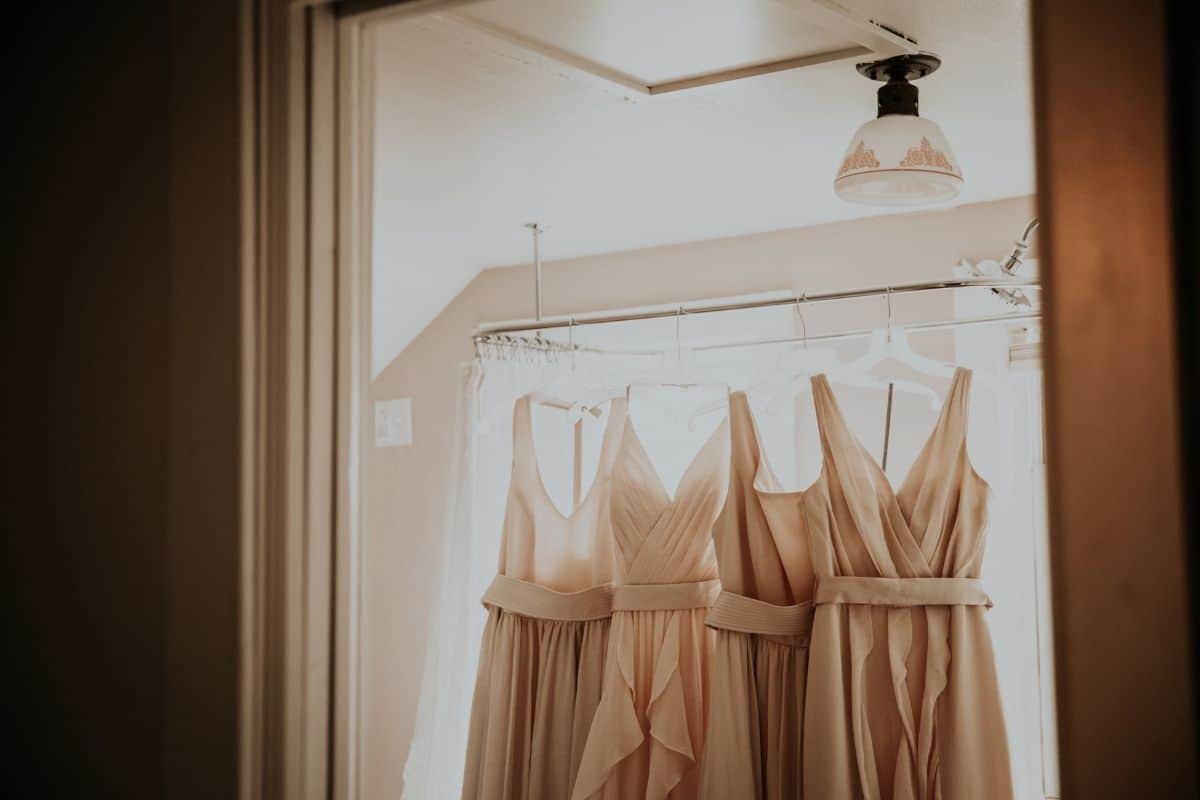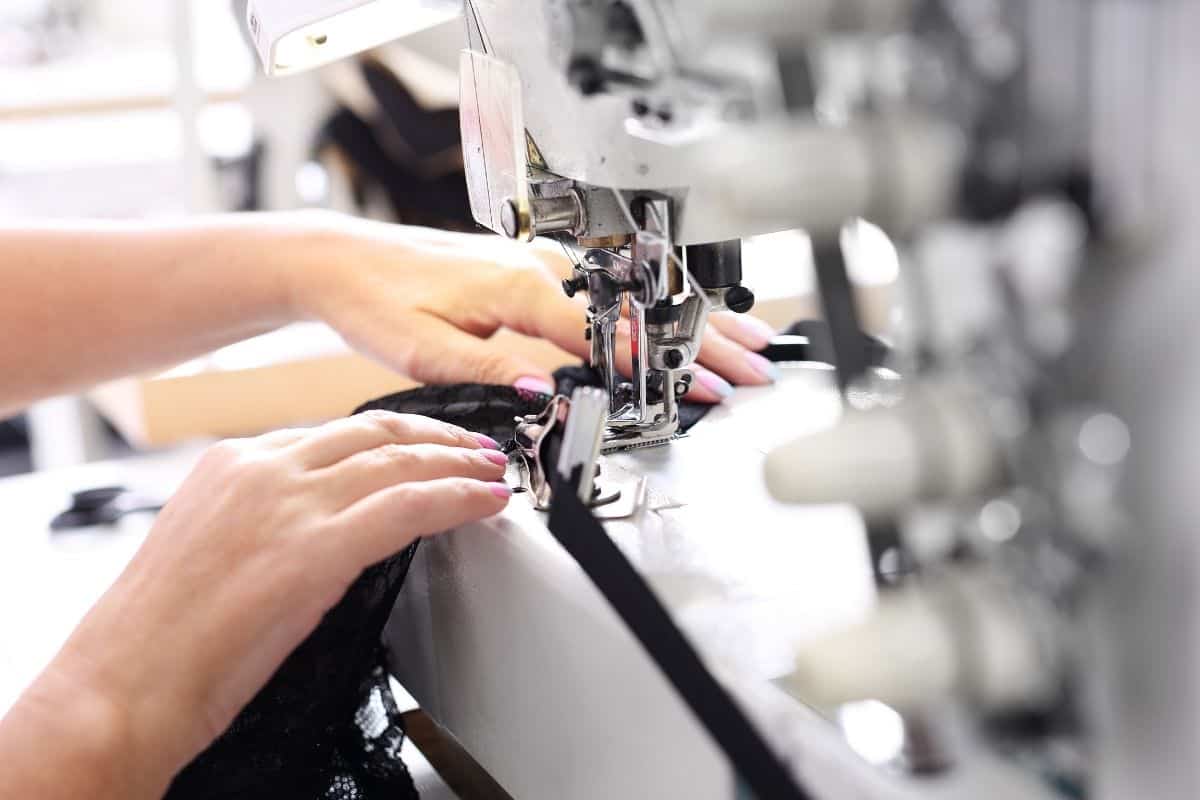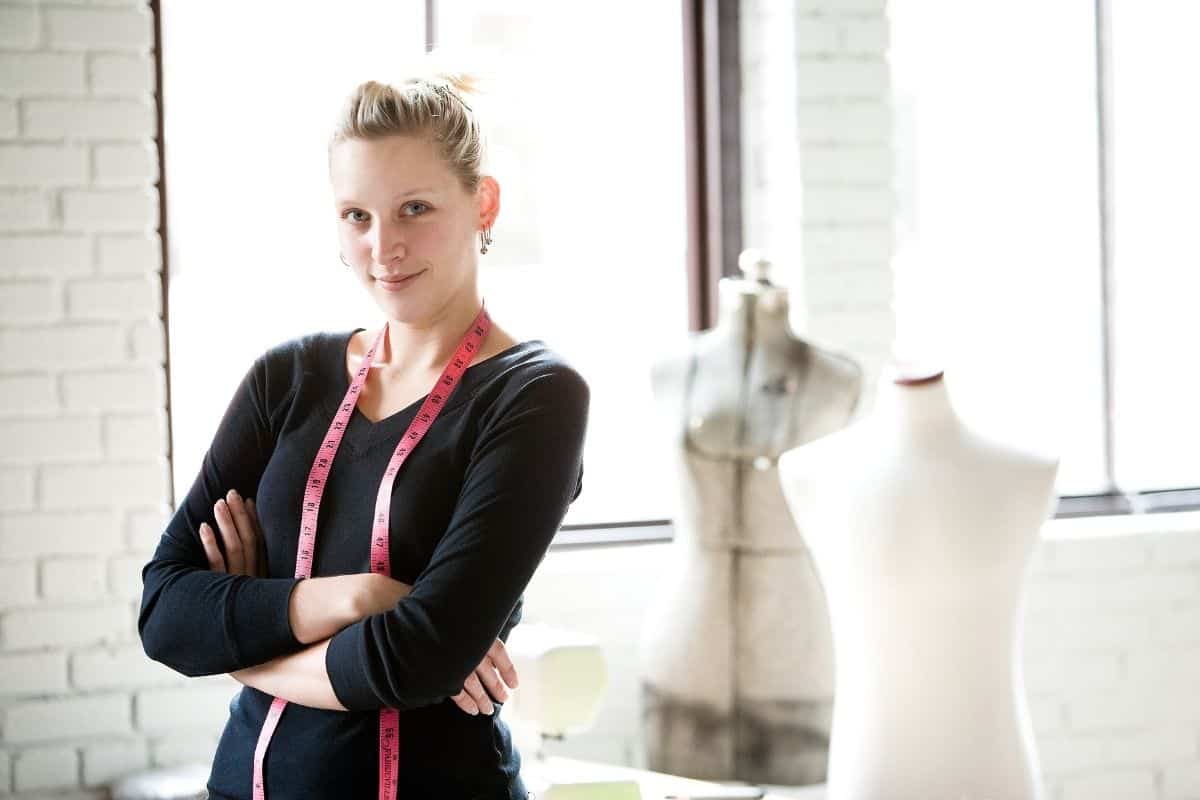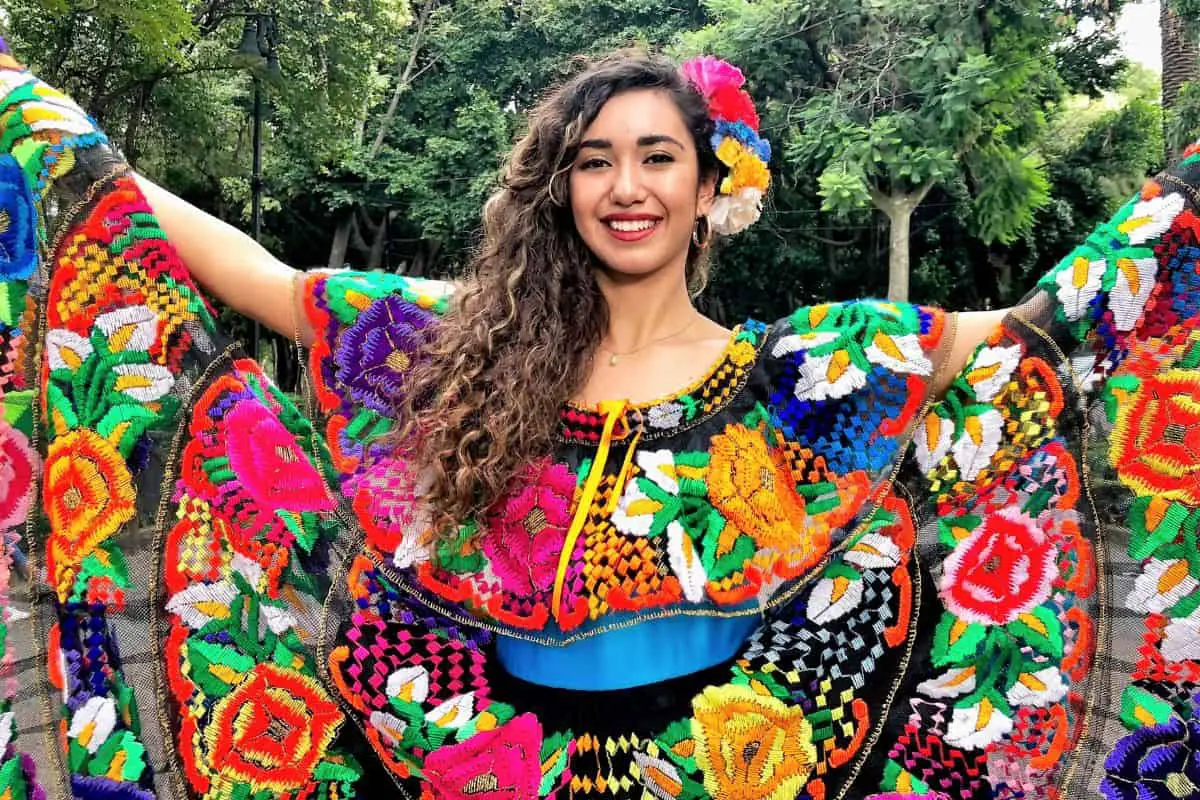How much does it cost to hire a professional seamstress to hem a bridesmaid’s dress? Who pays for the service?

Hemming dresses is a time-consuming task. The fabric has to be cut carefully and then sewn back together. This requires a skilled hand and takes a long time to complete.
Hemming a wedding dress is a very laborious job. There are several steps involved in the process. First, the bride has to decide whether she wants her dress to be fully or partially hemmed.
Then, the dressmaker has to measure the length of the hem. Next, they have to cut the fabric into strips and sew them back together. Finally, the dressmaker has the option to add decorative stitches.
The cost of hemming a bridesmaids gown depends on many factors including the type of fabric used, the size of the garment, the number of alterations required, and the skill level of the tailor.
A basic bridesmaid’s dress can run anywhere from $100-$300 depending on the style and material.
Hemming a wedding dress can cost between $500-1,000. Professional tailors charge more than an amateur because they know how to do their job properly.
The price of hiring a professional seamstress varies based on the skill level of the person you choose. If you want your dress to look perfect, you should consider paying more money.
However, if you just need a simple hem, you may not need to pay as much.
The complexity of the dress and the experience of the seamstress play a big role in determining the price. You’ll never get ripped off by shopping around for prices.
You might be surprised by how much things cost, but you won’t be shocked.
There are many ways to hem bridesmaid dresses. Most bridesmaids’ dresses can be hemmed by machine or hand sewing.
Machine hemming costs less than hand-sewing. However, hand-sewing is more time-consuming. Hemming bridesmaid dresses should be done about two weeks before the wedding.
How Do You Know If The Dress Needs To Be Hemmed?
A bridesmaid should never wear a dress that does not fit them perfectly. They should always be sure to get alterations before wearing the dress.
They should also make sure to stand up straight and avoid slouching during the ceremony or photo session.
How Much Does It Actually Cost On Average To Hem a Bridesmaids Dress?
Bridal dresses can cost anywhere between $45-$150. Prices depend on the skill of the seamstress, as well as the amount of time needed to create the dress.
Bridesmaids should expect to spend anywhere from $75-$150 for dress alterations. Some dresses require more than others, and the price will vary by city.
Alterations usually cost around $240. Details such as beading and sequins make dresses more expensive.
A dress with lots of beads and sequins might cost more than one without them.
Who Is Going To Be Hemming The Dress?

A seamstress who is in high demand will likely charge a higher price. She might also offer discounts to attract clients.
Other seamstresses may offer less expensive rates, but they won’t be able to compete with the well-known stores.
It Depends On The Complexity Of The Actual Dress
A straight hemline is easier than a waterfall hemline. You can get away with less effort when making a straight hemline.
Multiple layers make a dress more complicated, but if you’re willing to pay more money, you’ll be able to get a better-looking dress.
Where Does It Get Hemmed?
Hemming costs money. You should know what type of hem you want before you start hemming your dress.
There are many types of hems. Some are easier or harder to do depending on the material.
Where Can You Be Getting Your Bridesmaids Dresses Hemmed?
You can buy bridesmaids’ dresses online, but you should also try to go to a bridal shop or local seamstress.
A bridal shop does the hemming and alterations for bridal gowns, so this is always the best place to buy them.
However, if you’re looking for a custom-made dress, you might want to ask a local tailor about prices.
How Long Should It Take To Get The Dress Hemmed?
A bridesmaid dress usually takes about 2-3 weeks to get hemmed. However, there are other things that could delay the process such as the weather, demand, etc.
Also, you should be aware that there might be some extra alterations or hemming needed after a second fitting.
What Do You Need At A Dress Fitting?
Your dress must be brought to the fitting. There are many other items you’ll need to bring as well.
Make sure to bring the shoes that you plan to wear with the dress because they are the only way to ensure your hemline is correct.
Also, bring or wear the undergarments you want to wear with your dress. You should bring your own bra if you’re planning on wearing any other shareware.
With the exception of lingerie (jewelry and hair accessories), you should bring everything you’ll be wearing on the big day.
When Should The Bridesmaids Try And Get Their Dresses Altered?
Don’t wait until the end of the day to try on your dress. Get your measurements taken by a professional seamstress who knows what she’s doing.
You should schedule your fitting around 1-2 months prior to the wedding. A better fit will make you feel more confident during the big event.
When planning weddings, remember that June-October is typically the busiest time for bridal boutiques. Make sure to book appointments well in advance.
Don’t forget to take measurements before going into the shop. You should also try the dress on at your house before leaving for the store.
You should order your wedding dress and bridesmaid dresses early if you want them altered. Your mother-of-the-bride needs to buy her dress before the wedding date.
A bridesmaid that wants safety should start the dress alteration around three months before the marriage.
This is especially true when you are all getting your gowns done at the same place – it’s easy for them to take on too much work and focus on the bride’s dress, and then forget about the other bridesmaids.
It happens, unfortunately. This is why you must get your timelines right. Below is a good timeline to use as a bridesmaid:
Three Months Before

Fitting should be done three months before the wedding. The first fitting allows time for the dress to be made and hemmed.
A body is a body, but each person has different features, characteristics, and abilities.
Some people may be more athletic than others or have better reflexes or higher intelligence. But everyone has a body.
1-2 Months Before
This is usually when the dress is tried on for the second fitting to see if the first alterations have made a difference to what the bride and the bridesmaids want.
This is an opportunity to voice if anything else needs to be altered or to see if more changes need to be made to the dress.
Last Fitting
A seamstress does a great job sewing dresses for women, but she might not be perfect at every detail. She could use a few extra pins to secure a particular piece of fabric.
She also needs to use a bit of tape to cover up a mistake. Make sure you have a clear idea of what you want to do before the wedding day. You wouldn’t try anything new on the wedding day, right?
How Long Exactly Should The Dress Be?
Your bridesmaids will vary in height, but the dress should fit them all well.
Based on the style of the wedding dress, the dress should fall differently for each bridesmaid depending on her height.
Shorter Dresses
Short dresses should be about 3/4 of the leg length. Girls with longer legs can wear them up to the knee. Tea dresses are usually worn with pantyhose, leggings, or stockings.
Longer Dresses
Girls should wear high-heeled shoes when going to a fashion show. Heels make the girls’ legs appear longer.
A seamstress should leave 2.5 inches of space around the dress hemline to avoid dragging the hemline.
Layering
Bridal gowns with unique layering require hemming. Hemming is done by cutting out sections of fabric and sewing them together.
For example, if there is a short section of material that goes down past the knee, then the dress needs to be cut up so that the bottom portion is longer than the top.
This means that the bottom of the dress will need to be sewn together to form a skirt. If the skirt is too long, then it will need to be shortened.
A Fantastic Service

When you choose a bridesmaid’s dress, you want to make certain that it matches the bride’s dress perfectly.
Your seamstress should know how to hem a dress properly. You would need to pay attention to the length of the dress.
There are many kinds of dresses that you could wear. A long dress may require longer hems than a short dress does.
As well, there are dresses with mullite layers and lengths. These dresses will be harder to hem correctly.
A seamstress who has experience makes a better dress than someone who doesn’t. The prices for dresses vary depending on whom the bride is.
Bridesmaids should shop around to get the best deal. A bridesmaid should leave enough time to get the dress altered before the wedding.
Make sure you have enough money for alterations if something happens. Don’t let your friends spend too much money.
What Are The Most Common Dress Alterations?
Most brides want their wedding dresses to last forever. A designer should take into account the fact that a bride might wear the same dress several times during her lifetime.
So when designing a wedding dress, the designer needs to consider how much room he or she has to cut off the bottom of the dress to accommodate each bride’s height.
Bust
Big dresses are great for women who are pear-shaped because they give them more room around their waistline.
However, if the top is too loose, then the woman may feel uncomfortable when she dances. A tailor can make adjustments to the top so that it fits better.
Waist And Hips
A woman who wears a size 34B dress should wear a 36C bra. She should also wear a 32D skirt.
These calculations need to be taken into account when making alterations for the waist and hips and for the original purchase of the dress, to avoid having to make alterations in the first place.
Shortening The Straps
Strapless dresses need to have the right length of straps. You can get them shortened by a tailor. You can also buy gloves to match your outfit.
Final Thoughts
You don’t want to buy a cheap dress because you’ll regret it later. The price tag shouldn’t matter as long as you’re happy with the results.
The seamstress should be able to alter the dress to suit the bride’s taste. It is important to find a good seamstress who knows how to hem dresses.
If you aren’t comfortable with the way the dress looks, then you should consider having it altered. The seamstress should be able to change the design of the dress.
- Maid of Honor vs Matron of Honor: Understand Their Roles and How to Choose - October 15, 2023
- Can I Wear Champagne to a Wedding? - September 24, 2023
- Letter to Your Daughter-In-Law on Her Wedding Day - September 22, 2023











Leave a Comment